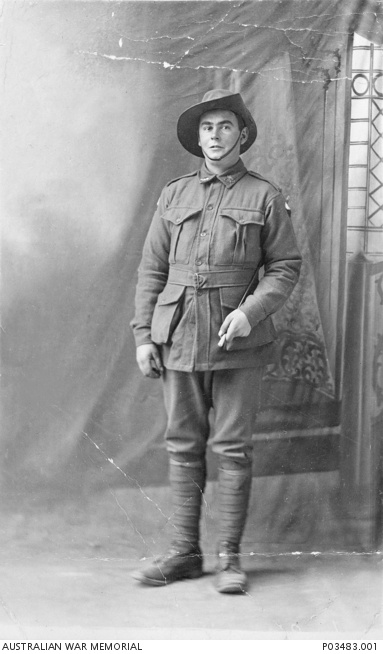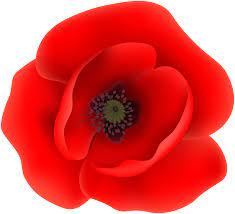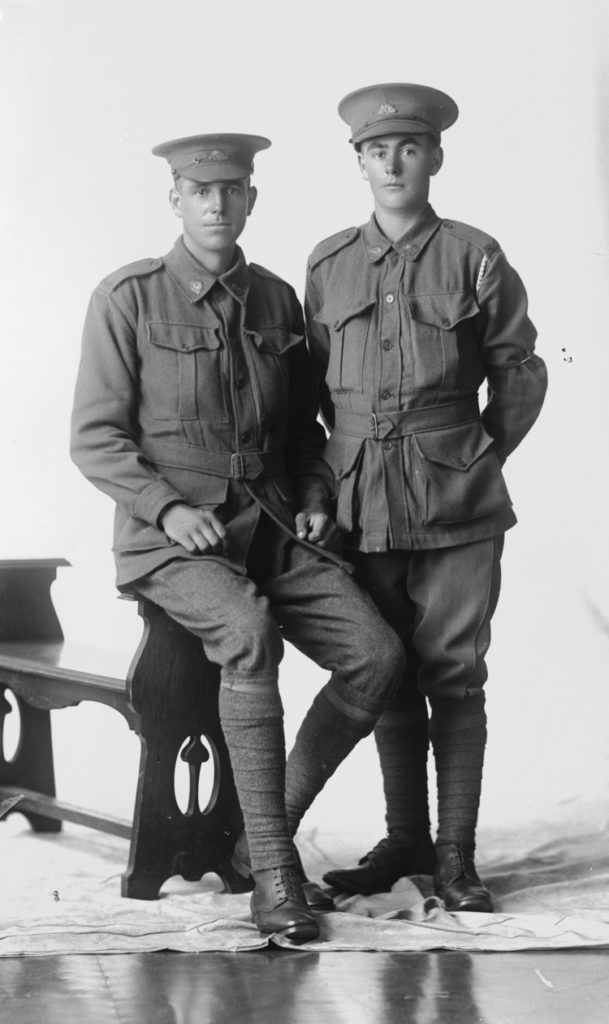Robert Harry Applin
Private Robert Harry Applin served in the Australian Infantry 48th Battalion, part of the 12th Australian Brigade, of the 4th Australian Division. His Division participated in the First Battle of Passchendaele on the 12th of October 1917, the second last stage of the Third Battle of Ypres. It advanced with the 12th Brigade from its position east of Zonnebeke to the German strong-point of Assyria, south of the village of Passchendaele. Their task was to flank guard the attack of the 3rd Australian Division on their left flank, which had to seize Passchendaele.
The attack of the 12th Australian Brigade was carried by the 47th and 48th Battalions. They had to move towards the Keiberg Spur, along the Ypres-Roulers Railway, running towards Passchendaele. When the 47th Battalion had captured the first objective, the Red Line, the 48th Battalion would move through the 47th and capture the Blue Line, the second objective, near the German strong-point of Assyria.
At 5.25 a.m. the men advanced towards the German lines, behind the 47th Battalion. Their advance was covered by a creeping barrage. Not all guns had reached their designated positions, due to the muddy conditions. Consequently the barrage was thin and lacked accuracy. Several shells fell short, causing casualties among the attacking Battalions. German machine-gun positions, unscathed by the feeble barrage, quickly opened fire, as the troops were struggling through the mud. On top of the German machine-gun fire their artillery put down a barrage on the jump-off line.
The 9th brigade, of the 3rd Australian Division was held up and could not keep pace with the 12th Brigade. So as the two Battalions advanced further, they suffered several casualties, when they came under fire of a German strong-point north of the railroad. Men were deployed along the railroad to fire on German positions in the 9th Brigade area and to make sure the Germans would not outflank them. The rest of the 47th and 48th Battalions swept through Decoy Wood and overran the German positions.
By now the Companies of the advancing Battalions had been intermingled on several places. Once they were in front of the Keiberg spur the advancing troops were enfiladed by machine-guns from Assyria, a concrete blockhouse on the right of the advance. The advance was checked at Assyria. It was decided to dig in, as the Battalions had lost the pace of the barrage. Once positions had been consolidated the German defenders at Assyria were being driven back by acute mortar and machine-gun fire. However the toll exacted by German machine-gunners and snipers had been heavy.
At 8.25 a.m. it was decided to halt the advance on the left, because the 9th Brigade’s attack had been halted. However on the right “A” Company went forward, securing several German positions and establishing outposts. During consolidation of the positions, the Battalion was heavily shelled by the German artillery. And “A” Company suffered heavy casualties from machine-gun and rifle fire coming from beyond Assyria. During the afternoon German troops were seen massing for a counter attack and while the 9th Brigade had failed to keep pace with the 12th Brigade, the Brigade was now in danger of being outflanked. When the Germans attacked the flank, the Battalion had to withdraw. However few of the outpost garrisons survived. Many of them were shot when they withdrew past Assyria. With their left flank up in the air both the 47th and 48th Battalion retired to their old front-line. The attack had been an utter failure.
Private Robert Harry Applin was killed in action, near the German strong-point of Assyria, on the 12th of October 1917. According to an eyewitness report he was killed by a shell before or during the Australian retreat. As the men had to withdraw he kept on lying in no man’s land. His remains were never recovered or identified and Private Robert Harry Applin is remembered on the Ypres (Menin Gate) Memorial.
Place of Birth: Hertford, England
Service Number: 3114
Place of Enlistment: Blackboy Hill, WA, Australia
Born in Hertfordshire, England, Robert Harry Applin emigrated to Australia at the age of 16 and settled with his family near Nyabing, WA, where he enlisted on 19 October 1916. He was killed in action on 12 October 1917, aged 21, in France and is commemorated on panel 145 of the Ypres (Menin Gate) Memorial in Belgium.
The photograph below is from an Australian Red Cross Wounded and Missing Enquiry Bureau file. The Bureau, which commenced operation in October 1915, sought to identify, investigate and respond to enquiries made regarding the fate of Australian personnel.
It investigated the majority of personnel posted as wounded and missing on official Army lists, as well as written enquiries from concerned relatives and friends. Approximately 32,000 individual case files were opened for Australian personnel who were reported as wounded or missing during the First World War.
The Bureau employed searchers to operate both at the front and in Britain. They searched official lists of wounded and missing, interviewed comrades of missing soldiers in hospitals and wrote to men on active service. Altogether 400,000 responses were sent back to those who placed enquiries with the Bureau.
Visit his Australian War Memorial entry, his Honouring ANZACS entry and his Red Cross Missing and Wounded file using the links below…
Australian War Memorial Entry
Honouring ANZACS Entry
Red Cross Missing and Wounded File

Robert Harry Applin

| Service number | 3114 |
|---|---|
| Death Date | Killed in action 12 October 1917 |
| Death Place | Belgium |
| Final Rank | Private |
| Service | Australian Imperial Force |
| Units | Australian Imperial Force 48 Australian Infantry Battalion |
| Place | Belgium |
| Conflict/Operation | First World War, 1914-1918 |

Robert Harry Applin Applin (right)
